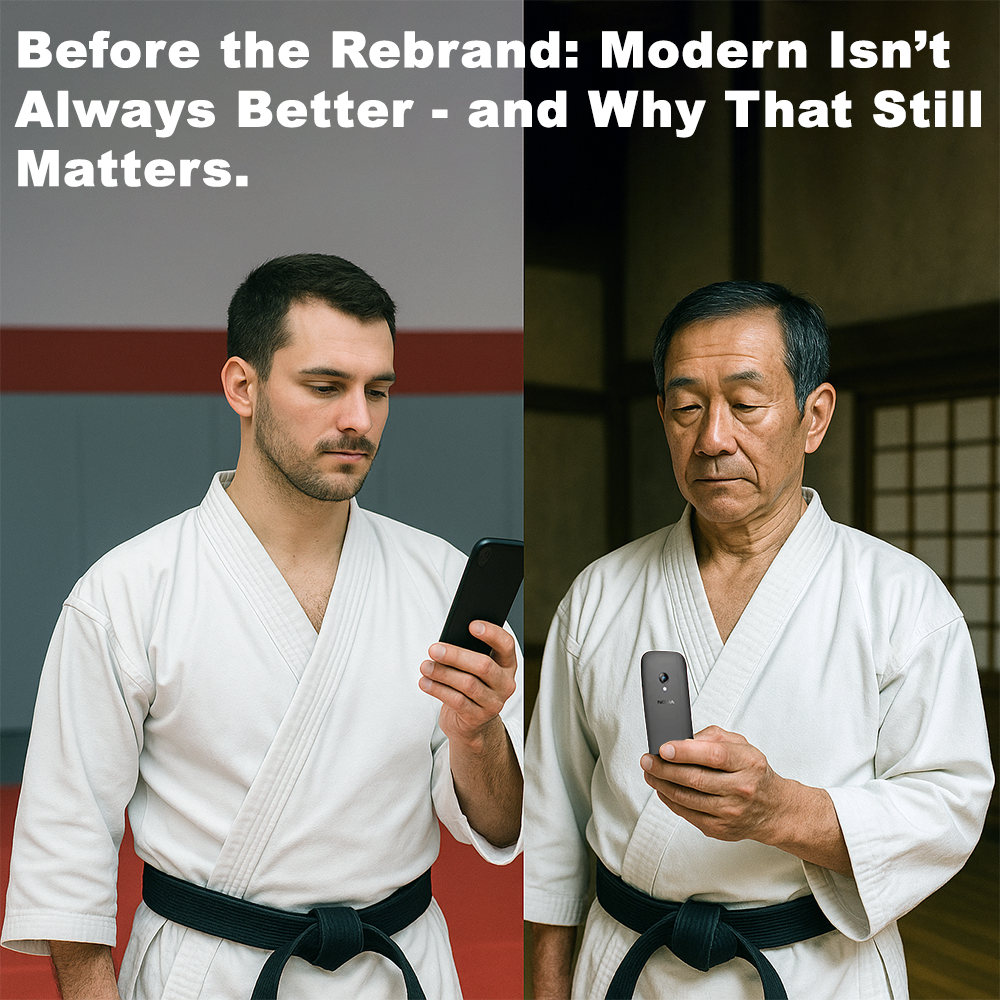
(Approx 2 minute 30 second read)
What many people call traditional karate had its inception at the beginning of the 20th century. The method of practice changed almost completely with its introduction to mainland Japan in the 1930s.
.
Today, that is what most people think about when having conversations about traditional karate.
.
Using an analogy, let’s consider the evolution of technology. If you start with the latest smartphone, you might think it’s the pinnacle of effectiveness. But sometimes, a ‘dumb phone’ – old, simple, and with incredible battery life – can do exactly what you need without all the distractions.
.
It’s easy to overlook the fact that those older devices were the result of years of practical refinement, offering something that newer, more complex gadgets can’t always match.
.
Karate is no different. If you begin in the 1930s, when it was formalized and Japanized, you might think that’s all there is. But that view misses the full breadth of what karate was – and still can be.
.
Everyone should know by now that the shift from Okinawan self-defense to the more standardized “3K karate” led to it being simplified and made more uniform – easier to teach, perform, and judge.
.
However, it isn’t real in the sense of what it was originally created for: civilian self-defense. By this we mean not created for the battlefield, as some suggest, but used by those of status and authority in everyday life.
.
Karate is probably thought of as martial due to the many other methods used at the time, and it’s much easier lumping them all together.
.
But karate has never strictly been martial at all.
.
Karate was never about preparing for the battlefield. It was about protecting yourself in everyday life – in the streets, homes, and villages of Okinawa. It was a civilian art, born of necessity.
.
To understand karate properly, and particularly kata, we have to see it through that lens, not through the modern interpretations that came much later.
.
This gives us a deeper appreciation of what karate was designed to be: a method of personal protection rooted in practicality and necessity.
.
If we limit our view to its modern form, we lose the richness, the ingenuity, and the human story behind it.
.
When I asked the question recently about what students want when they sign up for classes, a Kyokushin practitioner said, “they want to learn to fight.”
.
Personally I don’t think this is true. Protect themselves in some way perhaps, but to strictly just fight? No, I dispute that. That is the doctrine that has come from some practitioners who believe their method is the ‘best’.
.
And while we know that they produce strong athletes, they too have their limitations, rules, and restrictions – so let’s not get strung up on whose method is the ‘best’.
.
Just because something is modern doesn’t mean it’s better for every situation.
.
Yes, I’m guilty of trying to help people understand that karate is not just about the 3Ks, sparring, competition, and aesthetics. I don’t want people to lose sight of what its original intent was for.
.
Over time, tools evolve, but not always for the better – they’re often shaped by convenience, conformity, or show. And sometimes, what came before – simpler, closer to the source – still answers the question more directly.
.
That’s why I continue to teach and train in karate – not as it was rebranded, but with respect for how it was originally intended: a simple, reliable system of self-defense that still works when you need it most.
.
.
Written by Adam Carter
